 Wild Turkeys - November 7, 2018 Jeff Schalau, Agent, Agriculture & Natural Resources University of Arizona Cooperative Extension, Yavapai County In many eastern states, wild turkeys are becoming a nuisance species due to the abundance of feed, both natural and human-provided, and lack of predators. This is compounded by the intentional introduction of escaped pen-raised turkeys and hybrid wild turkeys. This is not the case in Arizona where wild turkeys continue to be elusive, feed on wild foods, and rely on suitable habitat provided by native ecosystems. Arizona has three subspecies of wild turkeys: Merriam’s, Gould’s, and Rio Grande’s. Merriam’s turkey is a native species that can be found throughout the western United States, primarily in the ponderosa pine forests of Colorado, New Mexico, and northern Arizona. Gould’s turkey is also a native species and is only found in Arizona and New Mexico, primarily in the mountain ranges near the U.S./Mexico border and in the mountains of northern Mexico. Rio Grande turkeys are native to Texas and Mexico to the south and were recently introduced on in Arizona on the Arizona Strip: a geographically isolated area north of the Colorado River in northwestern area of the state. Wild turkey’s preferred ecosystems include ponderosa pine forests, riparian areas, and southeastern Arizona’s “sky islands”. While these areas are preferred, wild turkey’s can be found in other vegetation types between elevations 3,500 and 10,000 feet. Water availability is a key habitat characteristic. Insects, young green plants, and mast (nuts and seeds from the forest floor) are preferred foods. In the spring, two year-old and older males (toms) weigh about 18 pounds on average, and yearling males or “jakes” weigh about 13 pounds. Hens more than a year old weigh between 8 and 12 pounds. As springtime temperatures warm, the tom turkeys start to gobble, strut, and spit signaling the start of breeding season. After mating, hens often continue upslope into denser habitats to lay and incubate their eggs. Hens mate once per year and lay between 8 and 12 eggs that take 28 days to incubate. The young are precocial (relatively mature and mobile) and move from the nest soon after hatching. Toms and hens are not usually seen together during the remainder of the year although both frequent similar habitats. During the summer months, the hens and poults (young turkeys) spend much of their time searching for bugs and seeds in small meadows and forest openings. In early winter, turkeys feed increasingly on acorns, pinyon nuts, and other mast crops. Later, the birds follow pine stringers downslope to snow-free areas where they feed on the seeds of ponderosa pine, junipers, pinyons, and other plants. Wild turkeys are hunted as a big game species in Arizona and these hunts are regulated by the Arizona Game and Fish Department (AGFD). Wild turkey management is often done in partnership with AGFD working in partnerships with locally-based conservation groups such as the National Wild Turkey Federation along with land management agencies such as the US Forest Service. In 2006, youth attending the Natural Resource Conservation Workshop for Arizona Youth (a week-long camp sponsored by the Arizona Section Society for Range Management) evaluated turkey habitat on and around Mingus Springs Camp. At camp that year, these youth presented their findings to decision makers within the AGFD which resulted in the introduction of Merriam’s turkeys into the area in 2007. In 2008, the National Wild Turkey Federation partnered with the AGFD, the Prescott Habitat Partnership Committee, and Mingus Springs Camp to install a wild turkey guzzler: a water-harvesting drinker designed for wild turkeys and other wildlife. Youth attending camp the following year assembled and installed the turkey guzzler with assistance from the above mentioned partners. So far, this wild turkey introduction and habitat improvement has been successful. Last summer, I heard and saw many wild turkeys in and around Mingus Springs Camp. By the way, Mingus Spring Camp was purchased by the University of Arizona in 2012 and is now known as the Harold and Mitzie James 4-H Camp at Mingus Springs. This statewide Arizona 4-H Camp is located in our backyard and was made possible by generous donors. I have included additional wild turkey information, photos of the Turkey Guzzler, and a link to the James 4-H Camp at Mingus Springs below. Follow the Backyard Gardener on Twitter – use the link on the BYG website. If you have other gardening questions, call the Master Gardener help line in the Camp Verde office at 928-554-8992 or e-mail us at verdevalleymg@gmail.com and be sure to include your name, address and phone number. Find past Backyard Gardener columns or provide feedback at the Backyard Gardener web site: http://cals.arizona.edu/yavapai/anr/hort/byg/. Additional Resources Turkey Arizona Game and Fish Department www.azgfd.gov/h_f/game_turkey.shtml Wild Turkey Appearance National Wild Turkey Federation www.nwtf.org/hunt/wild-turkey-basics/appearance Harold and Mitzie James 4-H Camp at Mingus Springs University of Arizona 4-H http://extension.arizona.edu/4h/james-4-h-camp-mingus-springs Photos 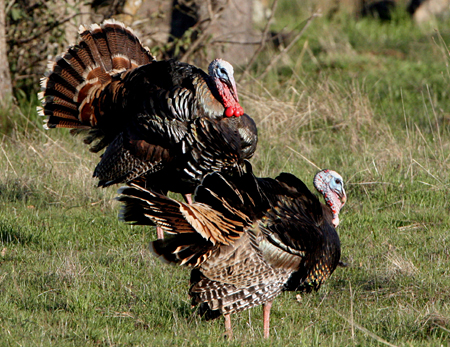 Tom turkeys strutting (Arizona Game and Fish Department). 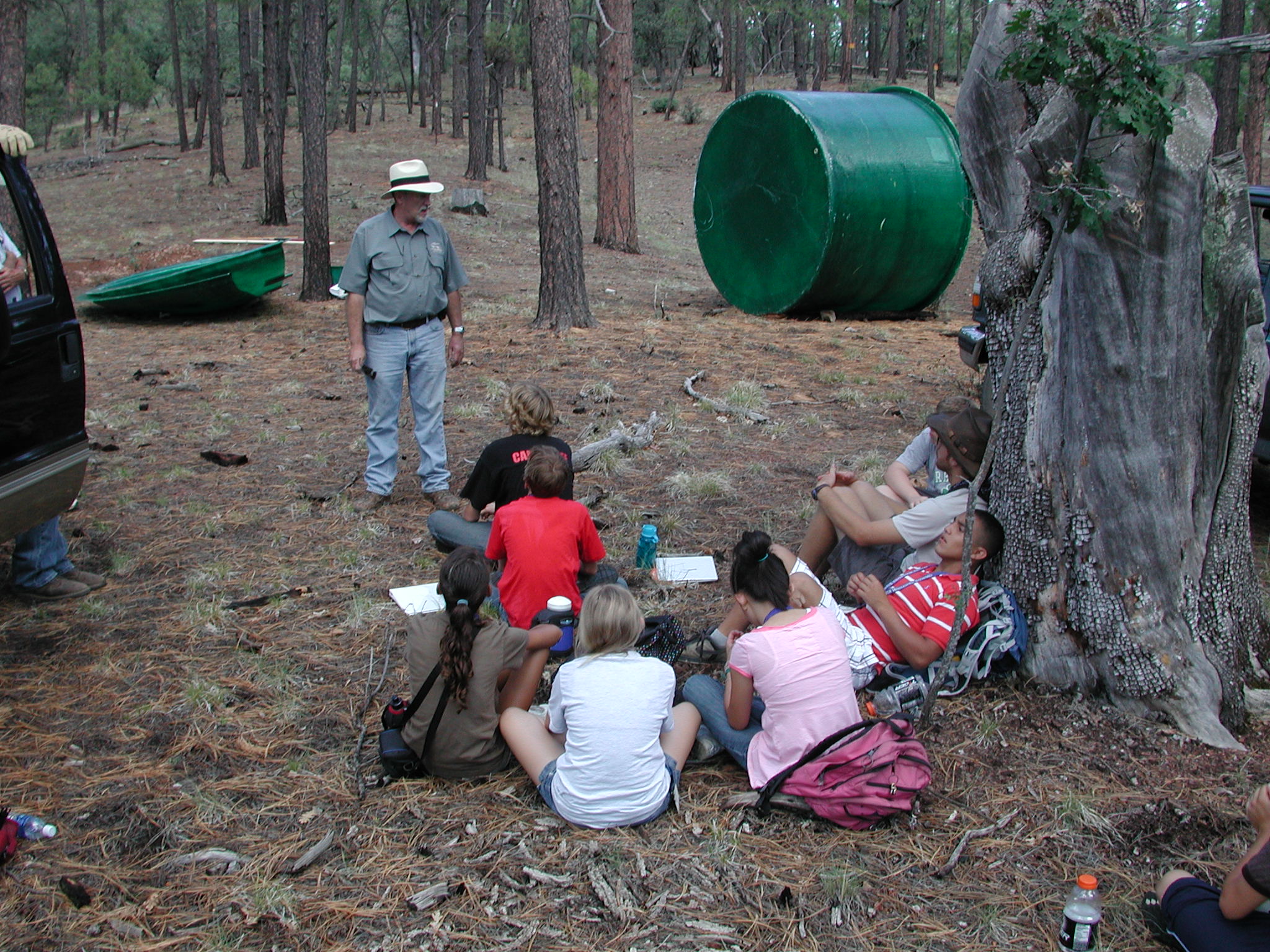 Steve Sams (NWTF) discussing turkey guzzler project with youth. 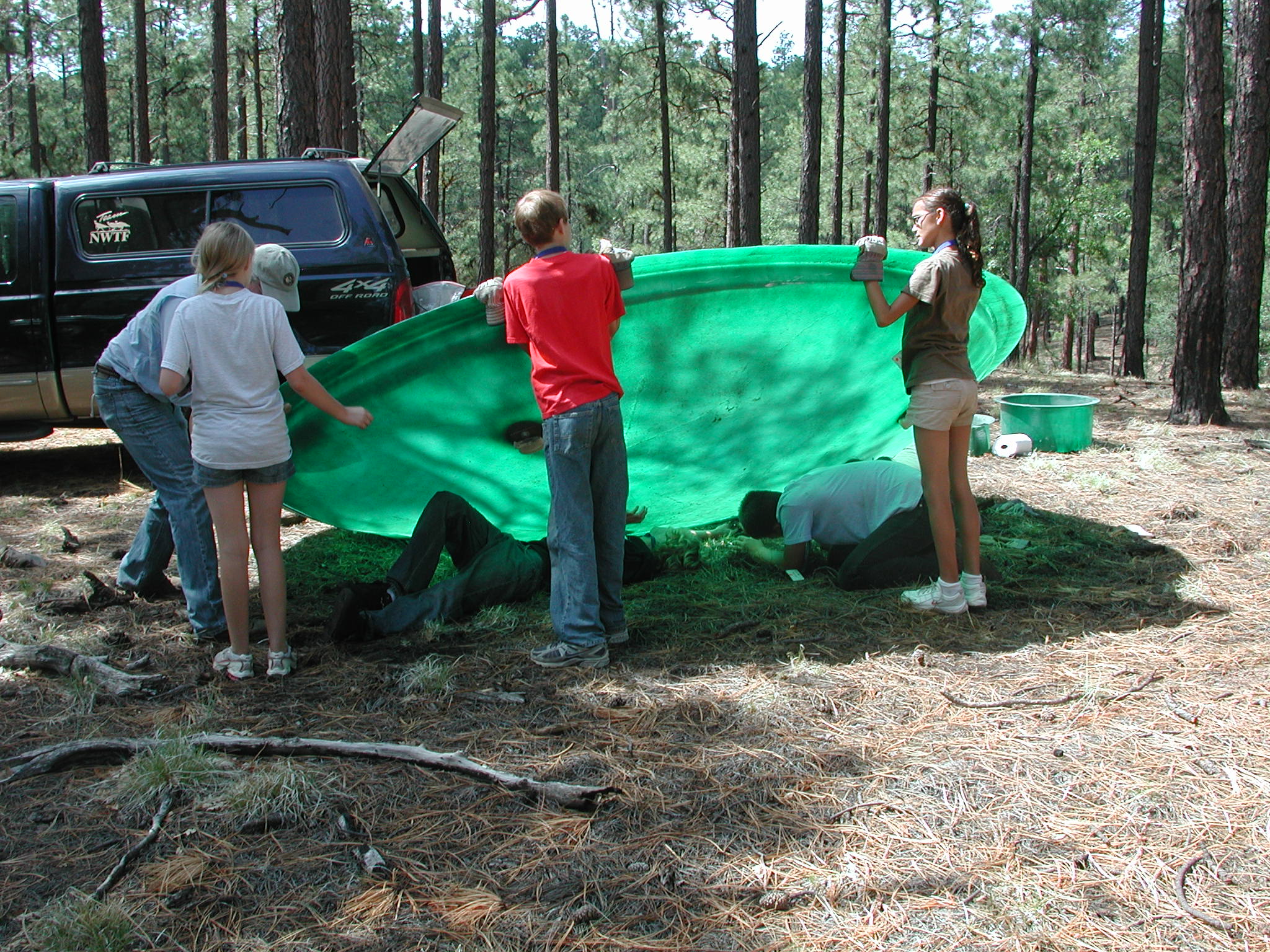 Assembling water catchment structure that will funnel water to tank. 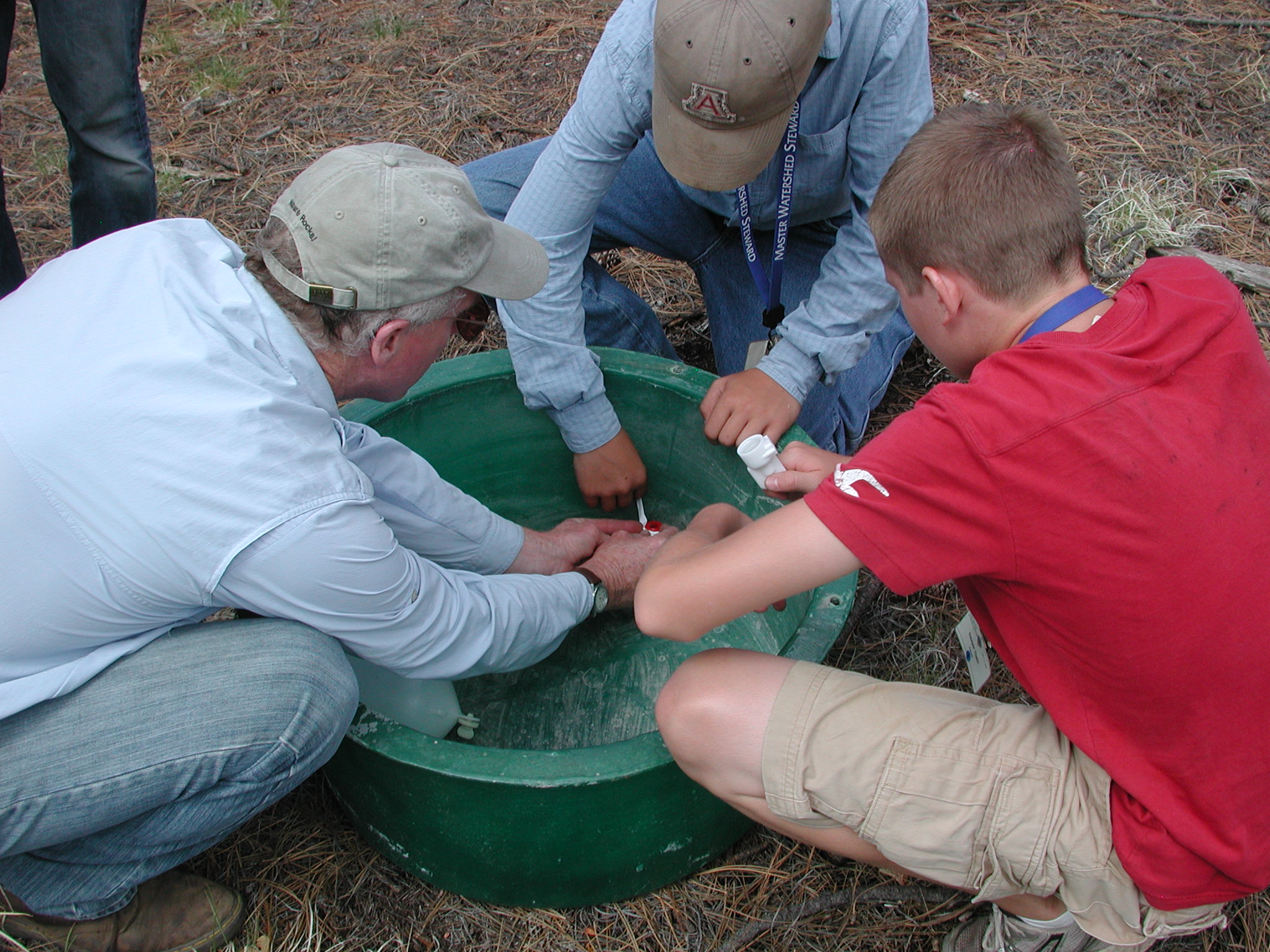 Wade Albrecht (AGFD) assists youth in assembling remote drinker located about 50 feet from tank. 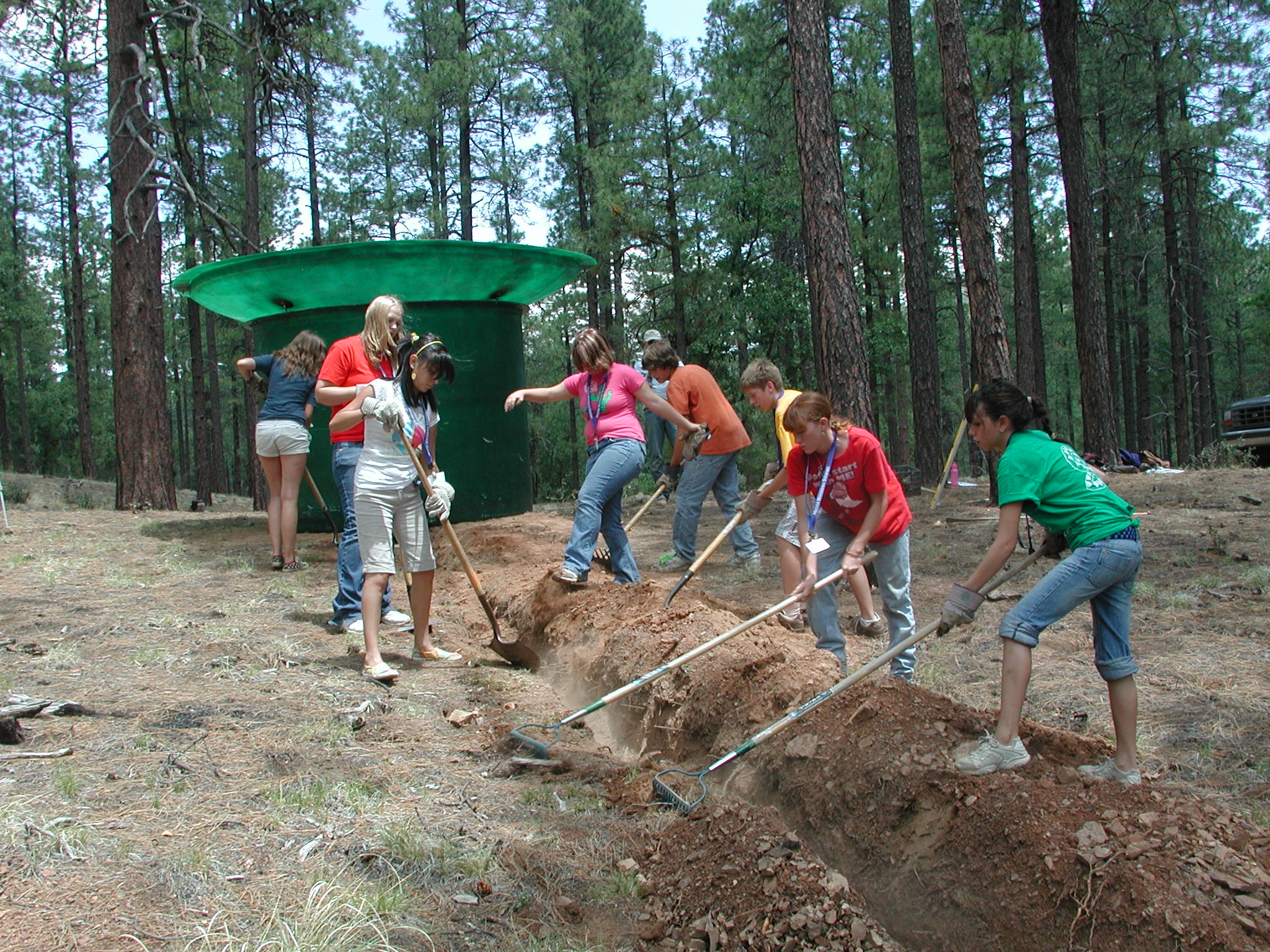 Backfilling drinker supply line with the assembled water catchment and tank shown at the rear. |